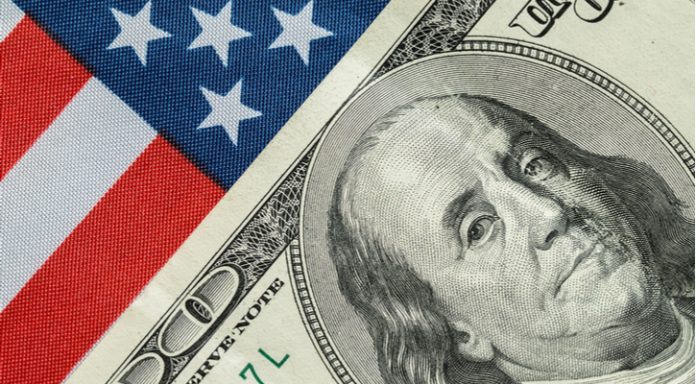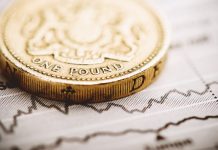The pound traded below US$1.31 for the first time in 7 months on Thursday. Limited Brexit progress and a cautious sounding Bank of England (BoE) dragged the pound sothwards. Not even weak US data was able to lift sterling.
| What do these figures mean? |
|---|
|
When measuring the value of a pair of currencies, one set equals 1 unit and the other shows the current equivalent. As the market moves, the amount will vary from minute to minute. For example, it could be written: 1 GBP = 1.28934 USD Here, £1 is equivalent to approximately $1.29. This specifically measures the pound’s worth against the dollar. If the US dollar amount increases in this pairing, it’s positive for the pound. Or, if you were looking at it the other way around: 1 USD = 0.77786 GBP In this example, $1 is equivalent to approximately £0.78. This measures the US dollar’s worth versus the British pound. If the sterling number gets larger, it’s good news for the dollar. |
The pound tumbled lower on Thursday for its third straight session. As the EU Summit kicked off, investors became increasingly aware that a no deal Brexit is the most probable outcome. Irish leader Leo Varadkar expressed his disappointment at the lack of progress made on Brexit, as there is still no resolution to the Irish border issue; an issue which was meant to have been resolved by this EU Summit. The leader also confirmed that he saw a no deal Brexit as the most likely outcome at the moment. The pound fell on the news
| Why is a “soft” Brexit better for sterling than a “hard” Brexit? |
|---|
| A soft Brexit implies anything less than UK’s complete withdrawal from the EU. For example, it could mean the UK retains some form of membership to the European Union single market in exchange for some free movement of people, i.e. immigration. This is considered more positive than a “hard” Brexit, which is a full severance from the EU. The reason “soft” is considered more pound-friendly is because the economic impact would be lower. If there is less negative impact on the economy, foreign investors will continue to invest in the UK. As investment requires local currency, this increased demand for the pound then boosts its value. |
In addition to Brexit woes, the pound also had to contend with a cautious sounding BoE policy maker, Jon Cunliffe. Mr Cunliffe expressed concern over the level of household debt in the UK, saying that a rise in interest rates could start a recession. Mr Cunliffe is unlikely to start voting for interest rate hikes if he believes they could start a recession. As investors digested his remarks, they pushed back expectations for a rate hike, pulling the pound lower.
| Why do raised interest rates boost a currency’s value? |
|---|
| Interest rates are key to understanding exchange rate movements. Those who have large sums of money to invest want the highest return on their investments. Higher interest rate environments tend to offer higher yields. So, if the interest rate or at least the interest rate expectation of a country is relatively higher compared to another, then it attracts more foreign capital investment. Large corporations and investors need local currency to invest. More local currency used then boosts the demand of that currency, pushing the value higher. |
Today investors will look towards the UK GDP reading. Analysts are anticipating that the UK economy grew 1.2% year on year in the first quarter. A weaker reading could pull the pound lower.
US GDP Slips
Whilst the dollar was stronger versus the weak pound, the dollar traded marginally lower versus its peers. A downward revised final GDP reading for the first quarter of the year was weaker than what analysts had been expecting. The US economy grew at 2% in the first quarter, weaker than the 2.2% forecast by analysts and significantly weaker than the 2.9% growth recorded in the fourth quarter of last year. However, despite the weakness analysts are still expecting an exceptional second quarter of economic growth, as companies start to reap the rewards of the tax cuts.
Today US inflation could boost the dollar. PCE, the Fed’s preferred measure of inflation is expected to tick higher to 1.9% in May, up from 1.8% in April. This takes the reading close to the Fed’s target of 2%, making a faster pace of rate rises, increasingly likely.
| —– |
|
This publication is provided for general information purposes only and is not intended to cover every aspect of the topics with which it deals. It is not intended to amount to advice on which you should rely. You must obtain professional or specialist advice before taking, or refraining from, any action on the basis of the content in this publication. The information in this publication does not constitute legal, tax or other professional advice from TransferWise Inc., Currency Live or its affiliates. Prior results do not guarantee a similar outcome. We make no representations, warranties or guarantees, whether express or implied, that the content in the publication is accurate, complete or up to date. Consult our risk warning page for more details.
This article was initially published on TransferWise.com from the same author. The content at Currency Live is the sole opinion of the authors and in no way reflects the views of TransferWise Inc.





